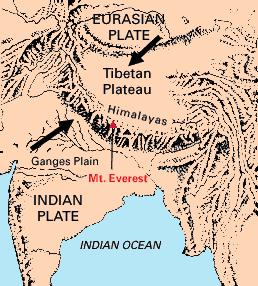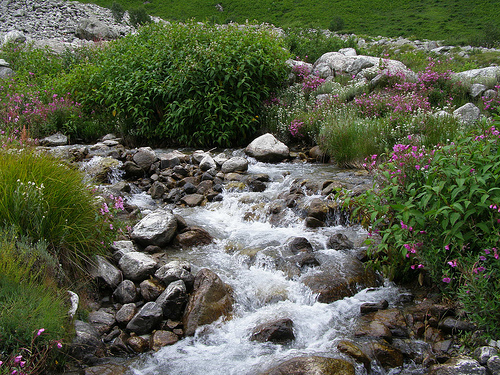The Formation of the Himalayas
The Himalayas are known to be young fold mountains. Young, because these have been formed relatively recently in the earth's history, compared to older mountain ranges like the Aravallis in India, and the Appalachian in the USA. They are known as Fold Mountains because the mountains extend for 2500 km in length in a series of parallel ridges or folds.
The accepted theory about the formation of the Himalayas started to take shape in the year 1912 when German meteorologist Alfred Wegener developed his Theory of Continental Drift. According to Wegener, the earth was composed of several giant plates called tectonic plates. On these plates lie the continents and the oceans of the earth. The continents were said to have formed a single mass at one point in time. From this single mass, today's continents have "drifted" apart from each other over a period of millions of years.
We pick up the story about 250 million years ago. During this time, all the earth's land was a single super continent called Pangea, which was surrounded by a large ocean.
|
The continents, 180 Million years ago. |
Around 200 million years ago (also known as the Middle Permian Period) , an extensive sea stretched along the latitudinal area presently occupied by the Himalayas. This sea was named the Tethys. Around this period, the super continent Pangea began to gradually split into different land masses and move apart in different directions.
As a result, rivers from both the northern Eurasian land mass (called Angara) and the southern Indian land mass (called Gondwana) started depositing large amounts of sediments into the shallow sea that was the Tethys. There were marine animals called ammonites living in the sea at the time. The two land masses, the Eurasian and the Indian sub-continent, moved closer and closer. Indian plate was moving north about at the rate of about 15 cm per year (6 inches per year).
The initial mountain building process started about seventy million years ago (or the Upper Cretaceous period) when the two land masses (or plates) began to collide with each other. As a result, the already shallow seabed rapidly folded folded and was raised into longitudinal ridges and valleys.





